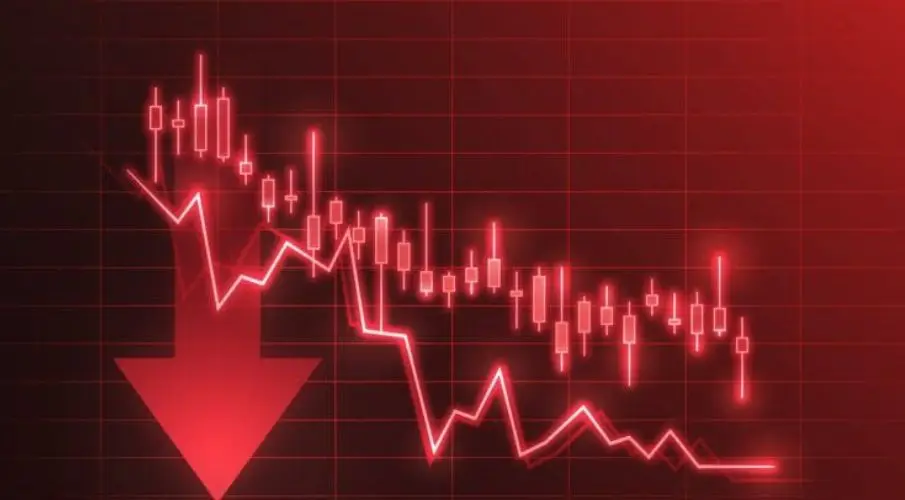New York experienced on this Thursday the moment when the financial markets stopped lying to themselves. A day when the fantasy of the boundless power of artificial intelligence collided head-on with reality – and when Donald Trump’s economic escapades finally reached Wall Street.
The indexes fell sharply. The S&P 500 dropped 1.7 percent, moving further away from its record high. The Dow plunged by nearly 800 points, while the Nasdaq lost 2.3 percent. It was the weakest trading day in a month and – after the setback in April caused by Trump’s Liberation Day tariffs – the second-worst of the entire spring.
At the center of the quake was Nvidia, that icon of AI optimism that for months acted like a gravitational hub for every dream of a new gold rush. Now the stock lost 4.2 percent and pulled several fellow travelers of the AI frenzy down with it: Super Micro Computer fell more than seven percent, Palantir almost as much, Broadcom five percent. It was the return of doubt, that inconspicuous but deadly force that investors like to suppress as long as prices rise. Yet even in the orderly trading halls of the New York Stock Exchange, the question arose: How far can you inflate a story before it bursts? The comparison to the dot-com bubble of 2000 suddenly no longer sounded like a tired warning but like a déjà vu from the future. The parallels were obvious: prices detaching from fundamentals, hope acting as a substitute for profit, an euphoria that carries only as long as no one tests its weight.
At the same time, the second pillar of the narrative that had supported the market for months began to crumble: the expectation of further interest rate cuts. That the Federal Reserve would continue its easing policy was considered nearly certain in many strategy papers. But now the probability of another rate move in December dropped within a week from 70 to just under 50 percent. The reason: the weeks-long governmental paralysis caused by the shutdown, which delayed numerous macroeconomic indicators and left the central bank flying blind. Fed officials like Susan Collins made clear that the talk of a rapid continuation of rate cuts may have been wishful thinking. Collins even said that steady rates could be appropriate “for some time” – a reversal that hit the markets like opening a window in midwinter. Thus, two currents collided: the overheating of AI stars and the shrinking of the hopes that had carried the market in recent months. On the trading desks of Wall Street, this showed in falling prices far beyond the tech sector. Disney lost more than eight percent after disappointing revenue, even though profit came in stronger. Cisco rose, but this counter-move felt like a footnote at the edge of a storm. Berkshire Hathaway, always an indicator of Warren Buffett’s skepticism, rose slightly – a sign that even the most patient investors could sense that euphoria would have a cost.
At the center of the quake was Nvidia, that icon of AI optimism that for months acted like a gravitational hub for every dream of a new gold rush. Now the stock lost 4.2 percent and pulled several fellow travelers of the AI frenzy down with it: Super Micro Computer fell more than seven percent, Palantir almost as much, Broadcom five percent. It was the return of doubt, that inconspicuous but deadly force that investors like to suppress as long as prices rise. Yet even in the orderly trading halls of the New York Stock Exchange, the question arose: How far can you inflate a story before it bursts? The comparison to the dot-com bubble of 2000 suddenly no longer sounded like a tired warning but like a déjà vu from the future. The parallels were obvious: prices detaching from fundamentals, hope acting as a substitute for profit, an euphoria that carries only as long as no one tests its weight.
At the center of the quake was Nvidia, that icon of AI optimism that for months acted like a gravitational hub for every dream of a new gold rush. Now the stock lost 4.2 percent and pulled several fellow travelers of the AI frenzy down with it: Super Micro Computer fell more than seven percent, Palantir almost as much, Broadcom five percent. It was the return of doubt, that inconspicuous but deadly force that investors like to suppress as long as prices rise. Yet even in the orderly trading halls of the New York Stock Exchange, the question arose: How far can you inflate a story before it bursts? The comparison to the dot-com bubble of 2000 suddenly no longer sounded like a tired warning but like a déjà vu from the future. The parallels were obvious: prices detaching from fundamentals, hope acting as a substitute for profit, an euphoria that carries only as long as no one tests its weight.
Investigative journalism requires courage, conviction – and your support.
Stärken bitte auch Sie unseren journalistischen Kampf gegen Rechtspopulismus und Menschenrechtsverstöße. Jede investigative Recherche, jede Dokumentation, jeder Tag, jede Nacht – all das braucht Zeit, Recherche und juristische Absicherung. Wir finanzieren uns nicht über Werbung oder Konzerne, sondern allein durch Menschen, die unabhängigen Journalismus möglich machen. Menschen wie dich.
Nicht jeder kann gleich viel geben. Aber jeder kann etwas bewirken. Jeder Beitrag schützt ein Stück journalistische Unabhängigkeit.

Karma
👍
Der schafft sie alle, dieser kranke Mann.
Von nichts kommt nichts.
Gut so. Die, die hinter der Blase stehen, gehören zu denen, die die gegenwärtige Politik ermöglichen.